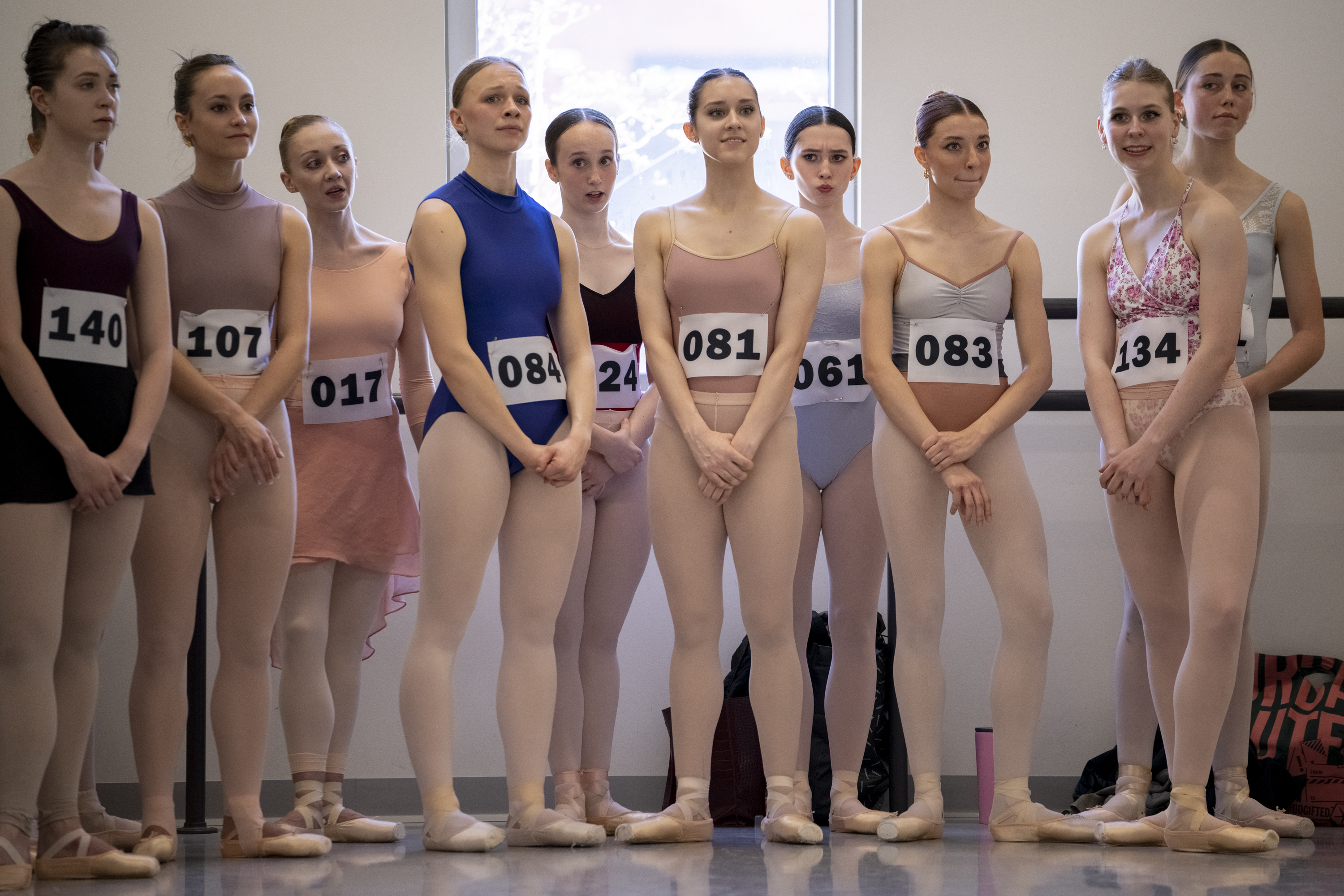
In a bright exercise studio on a Sunday morning in the Strip District, dozens of anxious youths clad in tights, shirt sleeves and stage makeup clustered haphazardly together in the middle of the floor.
It was, in a word, undignified.
But then, a whip-crack command from a proctor — “Let’s line up, military style!” — sent the young dancers scurrying into neat rows as a panel of judges conferred, checking laptops and clipboards.
A woman, diminutive and exacting, stepped in front of the group. She began issuing a rapid series of commands and demonstrating dance steps — “adagio now, ecarte, extend, and brush and pivot, arabesque, and a one, two, three ...” — as the teens mimicked her movements. The earlier awkwardness faded. They showed themselves to be graceful, even majestic, at times.
It was audition day at Pittsburgh Ballet Theatre, which in December set a record for attendance with its annual “Nutcracker” performances with around 32,000 tickets sold.
The company operates with about 35 company dancers. Only four of those positions are open. Nearly 800 young dancers, most in their late teens and early 20s, applied.
Those are slim odds. Winning a position at a full-time company is like winning the lottery in the dance world. The vast majority who train for a career in ballet will not win a job. As in many careers in the arts, the supply of talent is much higher than demand. Many dancers transition into teaching or going into other professions entirely.
A contract with PBT guarantees a year of salary — PBT dancers salaries average $50,482 — along with benefits and the enviable joy of appearing onstage as a professional dancer for 38 weeks out of the year and six large-scale productions.
But first, one must survive a brutal, hourslong audition process, a trial by fire that tests both body and mind.

FFor the company’s home audition this spring, about 120 applicants visited Pittsburgh from all over the United States, Canada and even Greece and the Czech Republic. In March, around 50 had attended an audition session in New York (many companies hold annual auditions in New York) and hundreds more submitted video applications online.

At the ballet’s Strip District studio on the first Sunday in April, registration began at 9 a.m., with each contender pinning a large number to their chest for easy identification throughout the day. The audition began with a traditional “barre” class, an advanced form of the popular ballet-inspired fitness classes. Dancers warmed up in class even as a half dozen members of the artistic staff were already making notes and decisions based on the way the applicants conducted themselves.
Many young dancers pay to train at pre-professional programs to gain experience and contacts — but even that doesn’t guarantee a spot in a professional company. And once a dancer wins a full-time job, careers generally only last until their mid-30s or so due to the physical strain of the movements. During the 14 “off weeks” at Pittsburgh Ballet Theatre, some company members focus on allowing their bodies to rest and recuperate, although some continue to train and dance.
Dancers are both artists and athletes. which means a ballet audition is a bit like a cross between an open call for actors and an hourslong gymnastics meet.
Candidates are judged based on talent and technique, and to a lesser extent on physical characteristics like height and strength. A healthy company has a variety of dancers who bring different strengths and attributes to the table.
The final hiring decisions rest with Adam McKinney, Pittsburgh Ballet Theatre’s new artistic director, who will make offers in the coming weeks.
McKinney is aware of the difficult odds and of the unpleasantness of the process. He sees his new role as an opportunity to work with other ballet companies around the country to make the audition process in the industry less harsh and more dancer friendly than it has been historically.
“Certainly we’re looking at technique, artistry, physical readiness, and musicality,” said McKinney, who took over artistic stewardship of the $12.7 million company in March after dancing professionally and teaching at Texas Christian University in Fort Worth, Texas.

After barre came a “centre” segment. Rehearsal director Marianna Tcherkassky began calling out different combinations to put the dancers through their paces.
The candidates, organized into small groups of around 10, demonstrated the steps — game faces on. The ballet’s pianist, Yoland Collin, armed with coffee and a granola bar, played the same music over and over, adjusting his speed faster or slower at Tcherkassky’s request.
After each segment of the audition, the dancers would rush the piano in pairs and clusters with a breathless “thank you!” — a tradition at every ballet class.

The steps ranged from graceful extensions and sweeps of arms and legs to more athletic leaps and pivots, each movement flowing into the next. Some dancers were confident and precise. One young man’s leaps were so smooth and extended he appeared to be flying, if just for a moment.
Others struggled more to remember the new routines, hopping to regain balance, trembling slightly from the effort. A sense of camaraderie developed throughout the day — many of the dancers are regulars on the audition circuit.
Traditionally, judges “cut” dancers throughout the day to focus on candidates most likely to win a position — whittling the group down to a final few by the final round.
That wasn’t the case on this day in Pittsburgh, a new development in the industry. All of the dancers stayed for the whole process. Candidates were shuffled into one of two studios depending on their ability, with about 60 of the stronger dancers moving to the company’s smaller studio.
McKinney, in a black modern tech suit and red sneakers, darted back and forth, a blur of motion nimbly zipping among numerous backpacks and water bottles lining the halls — taking notes and offering words of encouragement.
“Thank God I’m not auditioning — I already have a job!,” he joked brightly as the audition wore on.
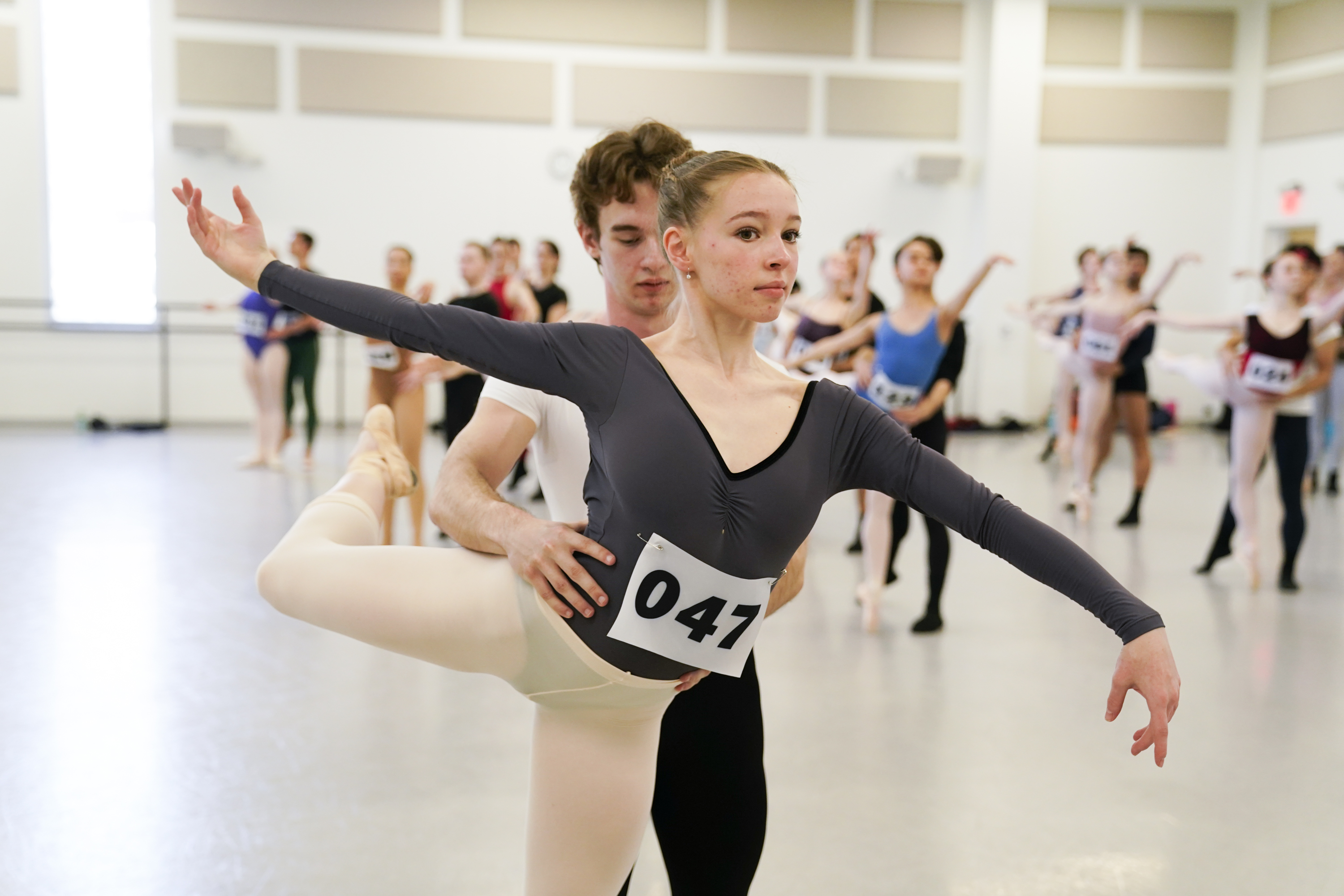
Most ballet companies hire dancers on one-year contracts. Typically, there isn’t much turnover year to year — all PBT dancers renewed their contracts this year — but a company doesn’t always know how many positions it will have open when an audition is held.
And that complicates the process. Hundreds applied to Pittsburgh Ballet Theatre without knowing how many spots were available and what physical profiles the company would be looking to fill, even as the company had to wait to see whether some of its current dancers would renew their contracts.

Some applicants who traveled significant distances may not have a ghost of a prayer if there’s not an opening for someone with their height and build.
“It's a little like a sports draft, except ballet companies are not all on the same calendar, which makes it really hard,” McKinney said. “I want to work with colleagues and other ballet companies to try to get on the same calendar.”
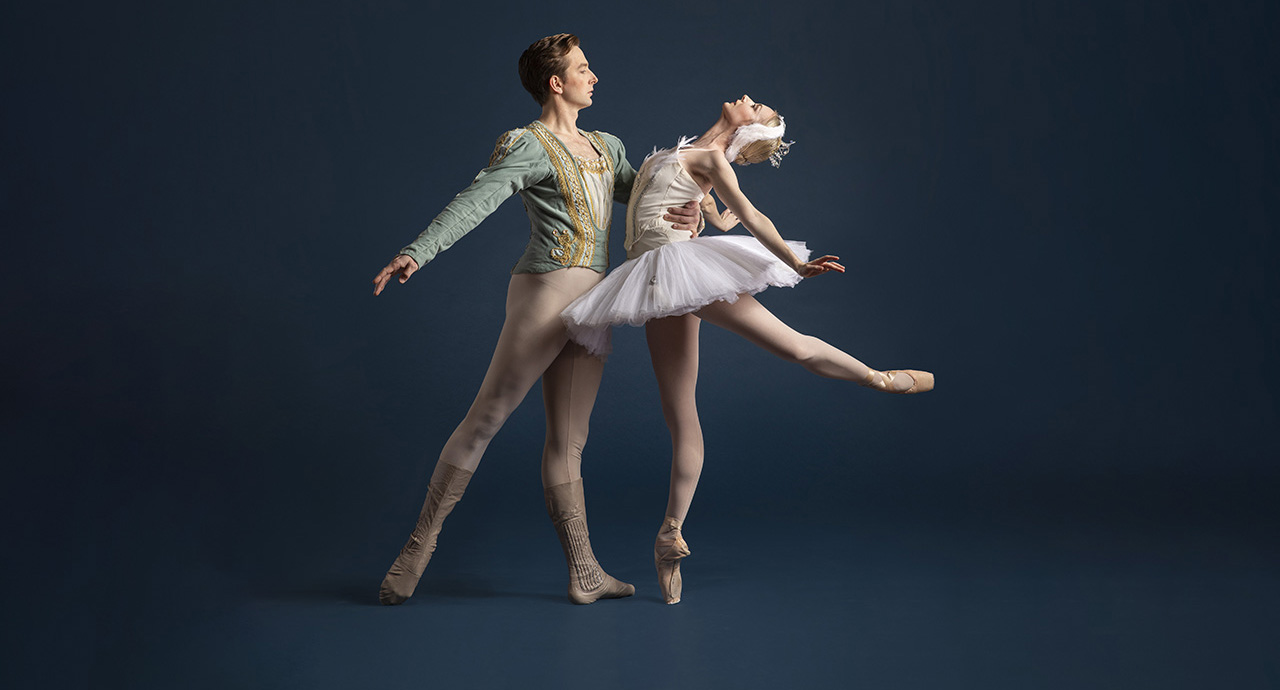
One of the company’s current dancers, Lucius Kirst, recalled a moment of panic after his PBT audition years ago when he had to decide whether to renew his contract with another company before he knew whether had earned a spot in Pittsburgh.
Kirst, 30, has been dancing with PBT for 10 years. He decided to become a professional dancer at the age 3 after seeing — of course — Tchaikovsky’s “Nutcracker” for the first time.
He started taking professional auditions at 17.
“My first was actually in New York, and it was a nightmare, a total zoo,” he said.
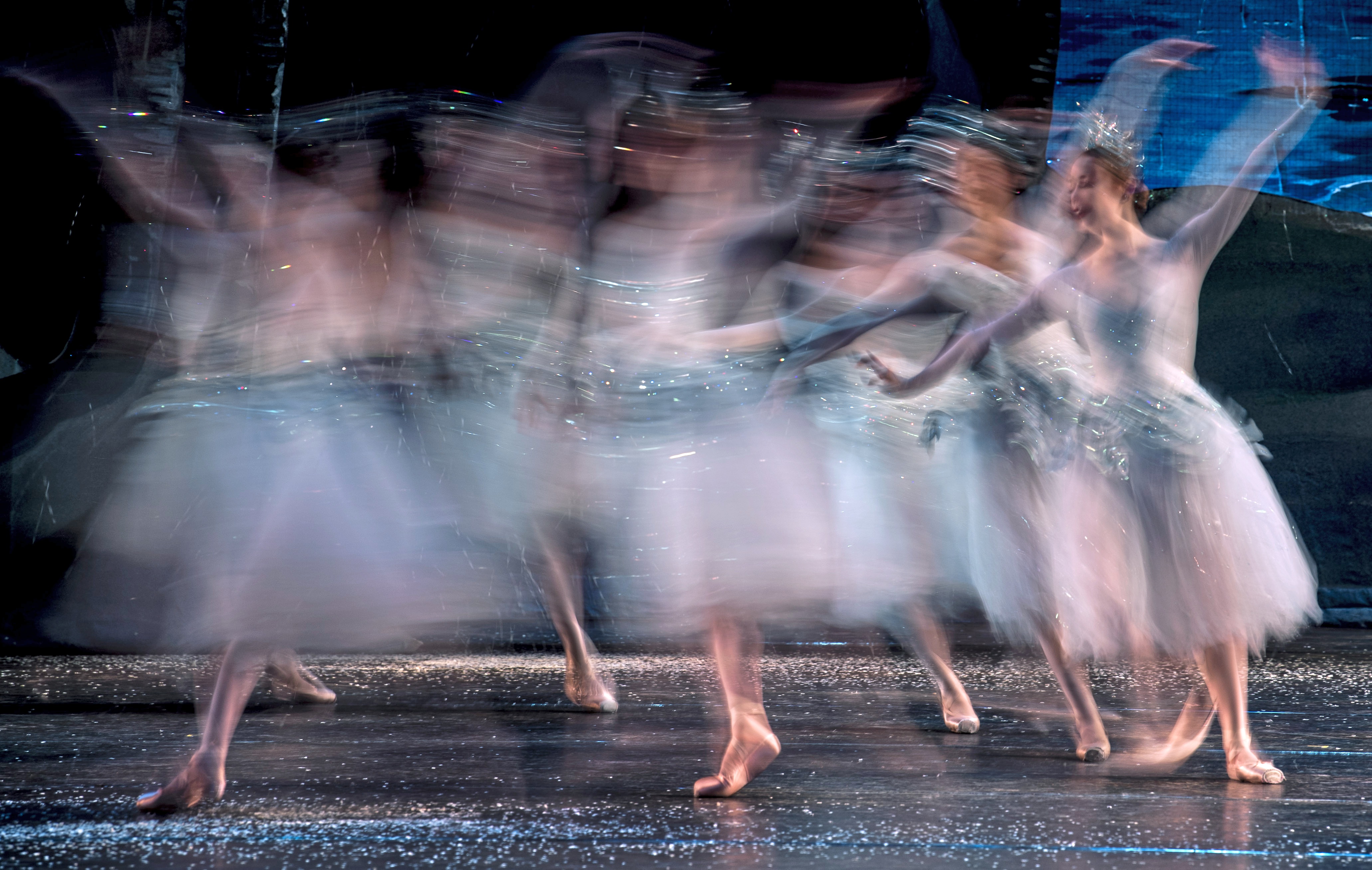
“The in-person process can be super self-conscious. I’m not a flexible guy, and I was warming up next to people whacking out splits and throwing their legs up by their head. And then, I’m over here just trying to touch my toes.”
At most auditions, men make up less than half of the applicants, which Kirst says gives male dancers a “leg up” over women at in-person auditions.

There are also few candidates of color. McKinney noted that allowing candidates to apply online has helped more dancers from non-traditional backgrounds apply to professional companies because it eliminates the costs of travel to New York City or a regional audition.
The next segment of the audition was a partnering segment, where dancers lined up by height and gender. (There was some high school dance awkwardness, and certainly some wishful thinking regarding relative heights in the male lineup.)
In general, men helped balance and spin and lift their partners. Strength was a key factor. One pair made them seem effortless, a young woman’s movements elegantly emphasized and elongated by her partner’s movements. To finish, her partner lifted her as they nipped to the side of the room to allow the next group their moment in the spotlight, giggling and high-fiving after a job well done.
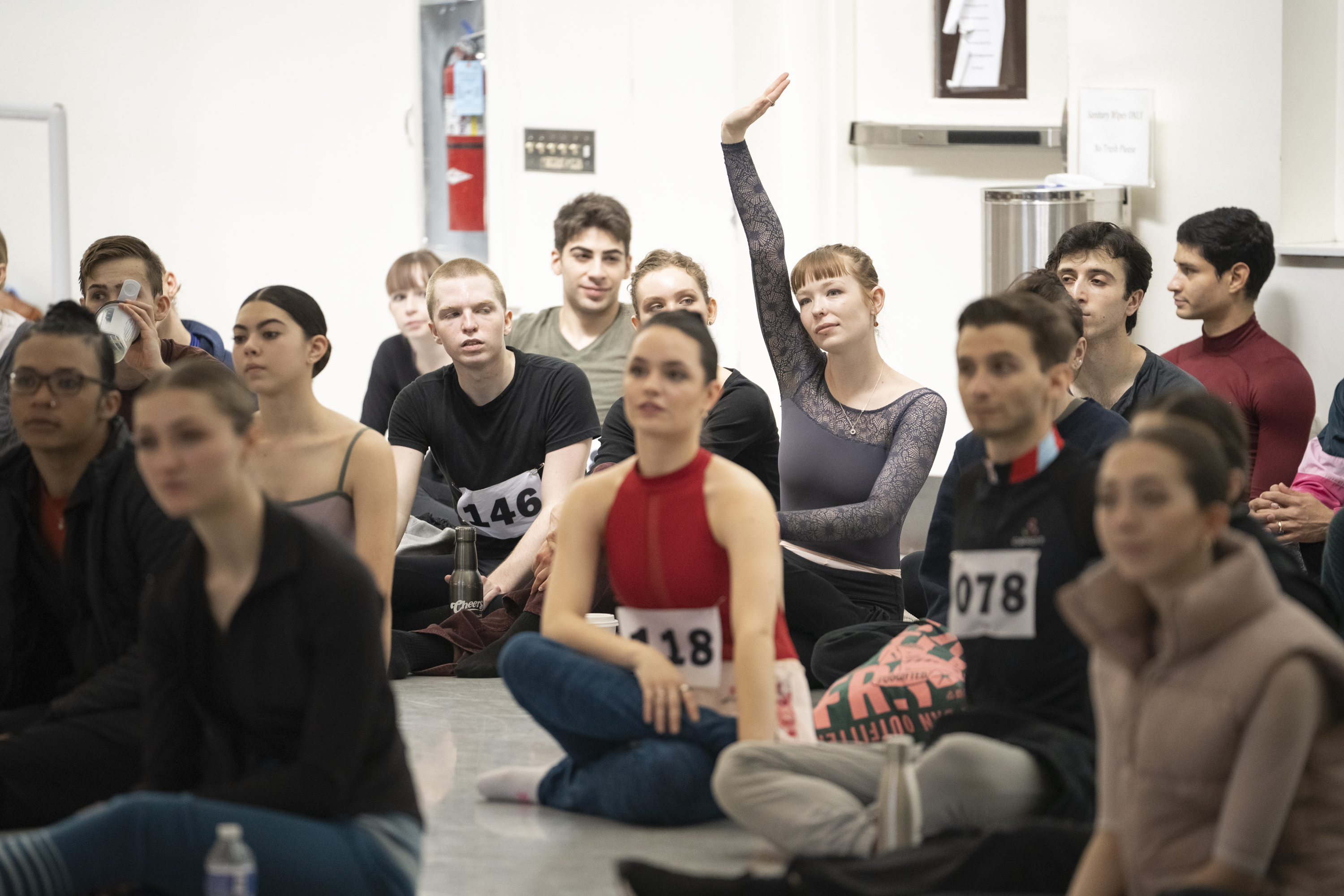
McKinney, who had swapped his suit for athletic clothes and dance shoes, coached and demonstrated, still taking notes. After the partnering segment, he demonstrated a brief contemporary routine, flying across the studio floor with bold, dramatic steps and movements, lighting up as he took the candidates through the steps. Here, there was more variation and liberty of movement among individual dancers.
McKinney held a brief Q&A for the full group in the larger studio — taking questions about the PBT and his vision — before thanking and dismissing dancers all. Start to finish, the process lasted about five hours.
“I’m really proud of you,” he said. “I saw some real risk-taking, some really beautiful moments today.”

The next stage in the process is a matchmaking game.
McKinney selects only a couple dozen dancers out of the hundreds who applied as company material. From that point, it’s a matter of matching the physical aesthetics and style of those dancers with whichever PBT members are leaving.
McKinney will call the three or four dancers he selects directly and offer them contracts. If any have already committed to other companies, he’ll move to the next name on the list.

And next year, the process will repeat when some dancers inevitably retire at the ripe old age of 37 or so or move to another company. McKinney will continue to build relationships with other companies as he steps more fully into his role at PBT.
“Artists are looking for jobs, and there are simply far more dancers than there are jobs available,” he said. “We as an organization are simply trying to make the process more humane.”
Jeremy Reynolds: jreynolds@post-gazette.com or 412-263-1634; Twitter @Reynolds_PG. His work at the Post-Gazette is supported in part by a grant from the San Francisco Conservatory of Music, Getty Foundation and Rubin Institute.
Jeremy Reynolds
Benjamin B. Braun
Laura Malt Schneiderman
Advertisement
Advertisement